This article is part of a series:
Animated Gifs That'll Science You Fast
|
NEXT
7 of 12 |

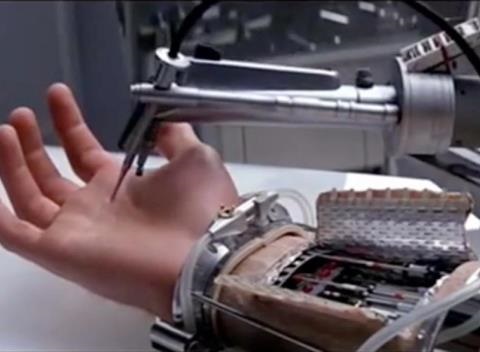
Modern prosthesis in the real world are becoming more functional, including the ability to control movement of prosthetic limbs through brainwave reading technology, and in some cases directly attaching electronics to nerve tissue. These movement-controlling features are one way, with the brain signals ordering a machine to following commands properly.
Just around the corner from now, prosthesis will be able to send signals back to the brain, allowing the user to experience a sense of touch in their artificial limb. When this technology becomes available, the brain will actually be communicating with an artificial limb, an external piece of machinery that can influence the brain and create false impressions in specific areas of the mind.
The Star Wars movies don’t always explain how their technology works but there is an obvious symbolic pattern. When characters in Star Wars get an artificial limb, it works better than anything we have in the real world, today. It looks like a real hand, blending seamlessly with the humanoid it’s attached to. Most importantly, it can feel, even feel pain when a robotic tool pokes his fingers to test the tactile sensitivity.
Luke’s new hand can receive signals from his brain but it can also send signals back into his brain. Symbolically, this is the beginning of Luke’s long journey to the dark side. Luke is becoming more like his father in more than one way.
When this thought initially struck me, I went so far as to speculate that maybe the dark side of the force lives within the machinery, the computerized components of the Star Wars universe’s technology. There are some other examples of the light side of the force helping Luke aim photon torpedoes in order to blow up the original Death Star, which he did by specifically abandoning the computerized guidance system.
The flaw in this theory is this: The Emperor is the only character who can use the dark side of the force besides Darth Vader, when the original Trilogy, A New Hope, Empire Strikes Back, and Return of the Jedi were made. The Emperor doesn’t seem to have prostheses.
Back in our world it’s a dangerous precedent to associate cybernetics with evil, as workable prostheses become more likely to happen and a superstition associated with artificial limbs could become a form of bigotry against the disabled people who use prostheses. While no one wants to create a false worry, making a fully tactile prosthetic hand would actually involve manipulating the brain and indeed the mind itself.
|
Jonathan Howard
Jonathan is a freelance writer living in Brooklyn, NY |
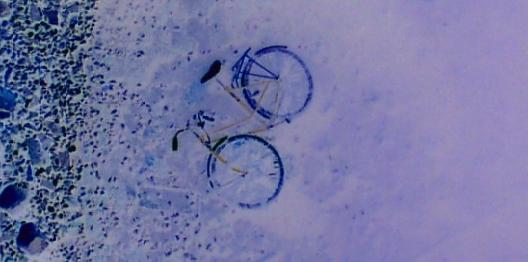
To illustrate my point, I’m going to do something kind of recursive. I am going to document my mind being changed about a deeply held belief as I explore my own cognitive bias. I am not here to tell you what’s REALLY going on or change your mind about your deeply held beliefs. This is just about methods of problem solving and how cognitive bias can become a positive aspect of critical thought.
I’m advocating what I think is the best set of decision making skills, Critical Thought. The National Council for Excellence in Critical Thinking defines critical thinking as the intellectually disciplined process of actively and skillfully conceptualizing, applying, analyzing, synthesizing, and/or evaluating information gathered from, or generated by, observation, experience, reflection, reasoning, or communication, as a guide to belief and action. (I’m torn between the terms Critical Thinking and Critical Thought, although my complaint is purely aesthetic.)
Ever since taking an introduction to Logic course at Fitchburg State college I have been convinced that Logic is a much more reliable, proven way to make decisions. Putting logic to practice when decision-making is difficult, though. Just like a math problem can be done incorrectly, Some logic can even counter-intuitive. My favorite example of intuition failing over logic is always chess. Even as I write this I can’t convince myself otherwise: I have regretted every intuitive chess move. It’s statistically impossible that all my intuitive moves have been bad moves yet logic works in the game so much better that my mind has overcompensated in favor of logic. In the microcosm of chess rules, logic really is the better decision-making tool. Often the kernel of a good move jumps out at me as intuition but then must still be thoroughly vetted with logic before I can confidently say it’s a good move.
In high school, I was an underachiever. I could pass computer science and physics classes without cracking a book. My same attempt to coast through math classes left me struggling because I could not intuitively grasp the increasingly abstract concepts. The part of my mind that controls logic was very healthy and functioning but my distrust for my own intuition was a handicap. I would be taking make up mathematics courses in the summer but getting debate team trophies during the school year.

Photograph of Marcel Duchamp and Eve Babitz posing for the photographer Julian Wasser during the Duchamp retrospective at the Pasadena Museum of Art, 1963 © 2000 Succession Marcel Duchamp, ARS, N.Y./ADAGP, Paris.
I’m not just reminiscing; everyone’s decision making process is an constantly-updating algorithm of intuitive and logical reasoning. No one’s process is exactly the same but we all want to make the best decisions possible. For me it’s easy to rely on logic and ignore even a nagging sense of intuition. Some people trust intuition strongly yet struggle to find the most logical decision; everyone is most comfortable using a specially-tailored degree of intuition and logic. People argue on behalf of their particular decisions and the methodology behind them because a different method is useful in for each paradigm.
In chess, intuition is necessary but should be used sparingly and tempered with logic. It’s my favorite example because the game can be played without any intuition. Non-AI computers are able to beat the average human at chess. Some AI can beat chess masters. So, I’m biased towards logic. Chess is just a game, though. People are always telling me I should have more faith in intuitive thinking.
“But,” you should be asking, “Isn’t there an example of reliance on intuition as the best way to decide how to proceed?”
At least that’s what I have to ask myself. The best example I found of valuable intuition is the ability to ride a bike. It is almost impossible to learn to ride a bike in one session; it takes several tries over a week or longer to create the neural pathways needed to operate this bio-mechanical device. Samurais trained to feel that their weapon was part of themselves, or an extension of their very arm. The mechanical motion of the human body as it drives a bicycle becomes ingrained, literally, in the physical brain. The casual, ubiquitous expression, “It’s like riding a bike”, is used to idiomatically describe anything that can be easily mastered at an intermediate level, forgotten for years, but recalled at near perfect fidelity when encountered once again.
Destin at Smarter Everyday put together a video that shows the duality of intuitive thinking. It is completely possible to train the human mind with complicated algorithms of decision making that can be embrace diversification and even contradictory modes of thinking.
Cont. below…
After watching this video, I embraced a moment of doubt and realized that there are very positive and useful aspects to intuition that I often don’t acknowledge. In this case of reversed bicycle steering, a skill that seems to only work after it has been made intuitive can be “lost” and only regained with a somewhat cumbersome level of concentration.
The video demonstrates the undeniable usefulness of what essentially amounts to anecdotal proof that neural pathways can be hacked, that contradictory new skills can be learned. It also shows that a paradigm of behavior can gain a tenacious hold on the mind via intuitive skill. It casts doubt on intuition in one respect but without at least some reliance on this intuitive paradigm of behavior it seems we wouldn’t be able to ride a bike at all.
This video forced me to both acknowledge the usefulness of ingrained, intuitive behaviors while also reminding me of how strong a hold intuition can have over the mind. Paradigms can be temporarily or perhaps permanently lost. In the video, Destin has trouble switching back and forth between the 2 seemingly over-engaging thought systems but the transition itself can be a part of a more complicated thought algorithm, allowing the mind to master and embrace contradictory paradigms by trusting the integrity of the overall algorithm.
These paradigms can be turned on and off and just as a worker might be able to get used to driving an automatic transmission car to work and operating a stick shift truck at the job site and drive home in the automatic again after the shift.
This ability to turn on and off intuitive paradigms as a controlled feature of a greater logical algorithm requires the mind to acknowledge confirmation bias. I get a feeling of smug satisfaction that logic comprises the greater framework of a possible decision making process anytime I see evidence supporting that belief. There are just as many people out there who would view intuition as the the framework of a complex decision making process, with the ability to use or not use logical thought as merely a contributing part of a superior thought process. If my personal bias of logic over intuition is erroneous in some situations, can I trust the mode of thinking I am in? Using myself as an example, my relief at realizing data confirms what I have already accepted as true is powerful.
That feeling of relief must always be noted and kept in check before it can overshadow the ability to acknowledge data that opposes the belief. Understanding confirmation bias is the key to adding that next level to the algorithm, in the video example from Smarter Everyday, steering a normal bike is so ingrained in the neural pathway that the backwards steering’s inability to confirm actually fill in the blank and the mind sends an incorrect set of instruction of the mechanical behavior to the body. Understanding the dynamics of confirmation bias would enable the mind to embrace the greater thought system that would enable the mind to go back and forth between those conflicting behavioral paradigms. I’m positing that it should be possible to master a regular bike and the “backwards bike” and be able to switch back and forth between both bikes in quick succession. The neural pathways between both behavior paradigms can be trained and made stronger than the video shows.
I believe that with practice, someo ne could alternate steering mechanism quickly and without as much awkwardness as we are seeing in the video just as my initial confirmation bias, now identified, doesn’t have to dictate my decision and I might be more open minded to an intuitive interpretation leading to the best decision in certain situations.
ne could alternate steering mechanism quickly and without as much awkwardness as we are seeing in the video just as my initial confirmation bias, now identified, doesn’t have to dictate my decision and I might be more open minded to an intuitive interpretation leading to the best decision in certain situations.
An inability to acknowledge that one’s own mind might be susceptible to confirmation bias paradoxically makes one more susceptible. Critical thinking is a method of building immunity to this common trap of confidence. Identifying the experience of one’s own confirmation bias is a great way to try and understand and control this intuitive tendency. No matter what your thoughts are regarding logic and intuition, examining one’s confirmation biases and better embracing them should lead to better decision making skills.
|
Jonathan Howard
Jonathan is a freelance writer living in Brooklyn, NY |

From folklore to children’s stories, it seems humans have always been fas cinated with spider silk, the diverse material produced in abundance, at will from the body of nearly all species of spider. Studying the biomechanics of the spinnerets and the chemicals that combine to produce various textures of silk at a molecular level has allowed scientists a new perspective on efficiency and biosynthesis.
cinated with spider silk, the diverse material produced in abundance, at will from the body of nearly all species of spider. Studying the biomechanics of the spinnerets and the chemicals that combine to produce various textures of silk at a molecular level has allowed scientists a new perspective on efficiency and biosynthesis.
The golden orb-weaver spider (Nephila clavipes) produces so much silk everyday it has become the most studied spider in the world, and was even included in a trip to the International Space Station in a special terrarium. Golden Orb-Weaver silk is 30 times thinner than your average human hair. If Spider-man were to produce a proportionate thickness of the same material the line would likely hold, maybe even hold the weight of two adult humans(Valigra, 1999.)
 It’s hard to find a material as strong while still retaining the flexibility and elasticity of spider silk. Maybe impossible. The dragline of the average spider silk is five times more durable than the Kevlar used in bullet-proof vests(Benyus, 2002, p. 132), plus, it’s lighter and breathes better. Kevlar is a petroleum product and requires pressurized vats of intensely hot sulfuric acid (Benyus, 2002, p.135; 2001). Biologically-inspired materials might be drastically more efficient on energy costs to create. Oil-based synthetic molecules often create dangerous bi-products which are hazardous to handle, expensive to store and virtually impossible to dispose. Spiders create superior materials with a very small amount of energy, heat or byproducts. (Benyus, 2001). NASA studies found that Gold Orb Spider spinneret systems can be so efficient they include reusing spider silk eaten and ingested after use.
It’s hard to find a material as strong while still retaining the flexibility and elasticity of spider silk. Maybe impossible. The dragline of the average spider silk is five times more durable than the Kevlar used in bullet-proof vests(Benyus, 2002, p. 132), plus, it’s lighter and breathes better. Kevlar is a petroleum product and requires pressurized vats of intensely hot sulfuric acid (Benyus, 2002, p.135; 2001). Biologically-inspired materials might be drastically more efficient on energy costs to create. Oil-based synthetic molecules often create dangerous bi-products which are hazardous to handle, expensive to store and virtually impossible to dispose. Spiders create superior materials with a very small amount of energy, heat or byproducts. (Benyus, 2001). NASA studies found that Gold Orb Spider spinneret systems can be so efficient they include reusing spider silk eaten and ingested after use.

Electron-microscope imaging shows the variety of textures a single spider can produce from its body.
Spider silk would be so incredibly useful it might not even be possible to anticipate the range of products it might inspire. Most materials knows to man are either elastic or have a high tensile strength but some pider silks fall in a rare category of scoring high in both areas (Benyus, 2001). Spider silk can stretch 40 percent longer than its relaxed state without losing any of it’s shape when it returns. Even the stretchiest nylon can’t perform that way (Benyus, 2002, p.132; 2001). Dupont materials compared silk to current steel cables used on bridges and standing structures worldwide and found dragline spider silk strong enough to be used as the quick-stop brake system on a jet in flight on an aircraft carrier (Valigra, 1999), at a fourth of the thickness of steel cables.
“spider silk is so strong and resilient that on the human scale, a web resembling a fishing net could catch a passenger plane in flight. If you test our strongest steel wire against comparable diameter silk they would have a similar breaking point. But if confronted with multiple pressures, such as gale-force winds, the silk can stretch as well; something steel cannot do” (Benyus, 2001, 2002).
Spiders evolved the ability to spin a web strong and versatile enough to allow it to run across, pull and twist into position and manipulate with its many legs in order to trap prey, set complicated tricks into actio n and run along without becoming entangled. The elasticity and strength of the web are partly why it is so easy for another species to become ensnared. Researchers who have taken the time to examine closely have realized in awe the potential for application in spaceflight, industrial, commercial and even fashion industries.
n and run along without becoming entangled. The elasticity and strength of the web are partly why it is so easy for another species to become ensnared. Researchers who have taken the time to examine closely have realized in awe the potential for application in spaceflight, industrial, commercial and even fashion industries.
Spider silk also shows incredible tolerance for colder temperatures without becoming brittle or falling apart. Spiders are able to hide underground or near the warm trunk of a tree and return to their outdoor webs later to repair and rebuild what is largely left intact. These cold-tolerant properties lend superior promise to its potential as aan advanced suitable for bridge cables, as well as lightweight parachute lines for outdoor climbing in military and camping equipment. Scientists have been hyping up its many 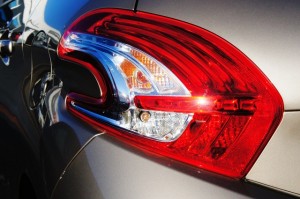 potential medical applications such as sutures and replacement ligaments (Benyus, 2001) and as a durable substance to fabricate clothing and shoes (made of “natural fibers”) and synthetic moldable solid material that can create rust-free panels and hyper durable car bumpers. (Lipkin, R., 1996).
potential medical applications such as sutures and replacement ligaments (Benyus, 2001) and as a durable substance to fabricate clothing and shoes (made of “natural fibers”) and synthetic moldable solid material that can create rust-free panels and hyper durable car bumpers. (Lipkin, R., 1996).
“if we want to manufacture something that’s at least as good as spider silk, we have to duplicate the processing regime that spiders use” Christopher Viney, early biomimetic proponent (Benyus, 2002, pp. 135-6).
Take a look at the fascinating process as a spider creates silk and you will find something that more closely resembles human technology than animal biology. Spiders have evolved to create something highly specialized without tools or any sort of special diet requirements to fuel autosynthesis of silk. Spider silk is formed out of liquid proteins within the spider’s abdomen. Several complex chemicals in a cocktail travel through the duct of a narrow gland. The substance is squeezed out in a very controlled manner through any combination of six nozzles called spinnerets. the protein collected from eating insects and various vegetable matters “emerges an insoluble, nearly waterproof, highly ordered fiber” (Benyus 2001).
Most spiders can produce a few different types of of silks. They can make threads that can be used to build structures, a strong dragline, or an elastic cable for repelling and reusing while creating the foundation for a web. They can make a sticky, wet line that clings to itself and most other surfaces for fastening strong structures, making cocoons and trapping prey. There is much to be learned because all of human scientific knowledge on the subject still comes from a handful of studies of only fifteen or more spiders to date. There are 40,000 spider species, most of which we know almost nothing about. There might be even better silk from some species.
“But yes there is probably a tougher, stronger, stiffer fiber being produced right this minute by a spider we know nothing about. A spider whose habitat may be going up in smoke” Viney (Benyus, 2002, pp.138-40).
|
Jonathan Howard
Jonathan is a freelance writer living in Brooklyn, NY |
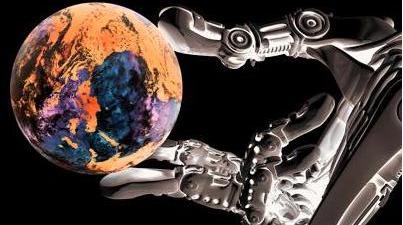
They are about making products that might empower mankind against dwindling resources. Ecosystems aren’t just where we all live and consume resources but they are a resource of information as well. The ecosystem is self-replenishing and efficient and can be channeled and worked with in a way that has yet to be attempted. Potential new materials come with side effects that warrant equal consideration. Biomimicry is a paradigm that fits many emerging techs. Take a look at spider venom’s effect on the drug industry, for example:
Biomimicry is a relatively young term, describing designs that derive inspiration by emulation of designs found in nature. The movement is focused on sustainable human endeavors and projects that will compliment the environment humans share with the rest of the natural world and thus better humanity’s chance for survival. Check out this video, the most recent by Janine Benyus, one of the idea’s most vocal proponents.
You might wonder why these chemicals are found in nature at all? There are many functions and motivations behind the diverse, unfound substances found in the Eco-system. Plants develop poison to discourage predators. some develop drugs to encourage other species to assist with seed dispersal. Evolution has provided the earth with highly diversified species of plants fungi and animals the vast majority of which have yet to be explored.
French researchers discovered a painkiller as powerful as morphine in the venom of e infamous African black mamba snake. Then there is a potential psoriasis treatment derived from the venom of the Caribbean sun anemone, undergoing testing in the U.S. might help sufferers with psoriasis, autoimmune disorders, multiple sclerosis and rheumatoid arthritis.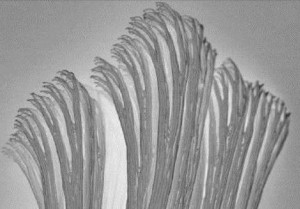
Textures and surface patterns of geckos have been studied for stickiness. Skin textures of some animals have been proven to possess antimicrobial properties, in that bacterial colonies can’t find a way to attach to surfaces, making water currents and frequent rinsing enough to eliminate infective agents.

Artificial limb design and development has been greatly advanced by designs mimicking the weight-bearing capacity of other animals. New technologies are being developed to grant disabled people the ability to feel touch, as the natural mechanisms controlling pain, touch and movement are further understood.
In recent biomimetic news, we may see a mastery of understanding the human eye lead to a leap in ocular and immersive tech. MHOX is an Italian design firm who would like synthetic replacement eyes. to become an affordable, regular upgrade people opt for. Their work could restore sight to the blind and be the missing link to allow locative tech and a lot of web 2.0 concepts to become workable mainstream realities.
to become an affordable, regular upgrade people opt for. Their work could restore sight to the blind and be the missing link to allow locative tech and a lot of web 2.0 concepts to become workable mainstream realities.
There is an initial shock in some people when these concepts are explained. Something about the current trends over the last few decades favoring straight, clean lines that are inspired by lifeless geometry over bio-inspired, flowing shapes.
The drugs and prosthetics discussed, theorized and predicted in the biomimetics industries doesn’t have to turn humans into cyborgs, although some proponents wouldn’t be against that. It is likely that the public will be more inclined to accept these advancements as they are developed. Decades back people might have been less receptive to plastic hip replacements and artificial hearts, but the medical community has become very good at installing these prosthetics as minimally invasive, outpatient procedures.
|
Jonathan Howard
Jonathan is a freelance writer living in Brooklyn, NY |
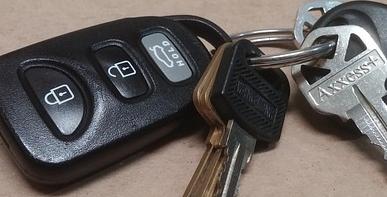
We live in a time where auto theft is incredibly impractical. Criminals in 2015 struggle to figure out how to get past electronic security and alarm systems, reflecting an over 90% drop in NYC auto theft since the early 90’s. These days, even a successfully stolen vehicle can be recovered with GPS tracking and incidences of theft are often caught on video.
It might seem like convenience is weakness but since car theft is way down, this might not hold true at the moment. The security holes that seem most vulnerable to exploitation revolve around a key fob. Fobs are those small black electronic keys that everyone uses to unlock their car these days. They work by using A pre-determined electronic signal that must be authenticated by the CAN system. If the authentication checks out, the doors unlock. In newer cars, the engine will start via push button if the fob is in the immediate vicinity of the car so the driver doesn’t have to fish them out of her pocket.
Etymology of the word fob: Written evidence of the word's usage has been traced to 1888. Almost no one uses a pocket watch these days but a fob was originally an ornament attached to a pocket watch chain. The word hung around as an ocassional, outdated way to refer to key chains. In the 80's, the consumer market was introduced to devices that allowed a car to be unlocked or started remotely. The small electronic device was easily attached to the conventional set of carkeys, and within a few years the term fob key was generally used to describe any electronic key entry system that stored a code in a device, including hotel keycards as well as the remote car unlocking device usually described by the word.
Recording FOB signals for replay. This is one of those urban legends that’s been around since at least 2008. The story goes: thieves record the key fob signal and can later replay it with a dummy fob. The car can’t tell the difference and unlocks/starts as if the correct key fob has been used. It’s easy for the thief to control the schedule and catch the victim unawares because it doesn’t have to interact with the fob in real time. Sounds like the most effective way to hack a key fob, right? Problem is, each signal is unique, created with an algorithm than includes time. If the devices are not synchronized the fob can’t open the lock. A recorded signal played back wouldn’t open the lock. The conventional wisdom is that the devices, proprietary knowledge and experience needed to make this method work are not worth a stolen car’s worth of risk. Secrets leak but honestly, a team organized enough to steal a car this way would be able to use the same skills to make a lot more money legally. Lastly, if you could reverse engineer and record fob signals the FBI would already be watching you. The demographic that used to steal cars in the 90’s were largely not like the fast and furious franchise. The idea that a huge tech security op could be thwarted isn’t necessarily far fetched but there are no recorded cases. Not one. For that to change, someone needs to figure out how the sync code is incorporated into the algorithm and apparently no one has.
Amplifying FOB signal to trigger auto unlock feature. Not only is this method genius but it is rumored to be already in use. Eyewitnesses claim to have seen this in use and it sparked theories about the methodology. Unlike recording a signal, amplification is a lot cheaper and requires almost no proprietary knowledge of the code to pull off. It works like this: A device picks up a range of frequencies that the key fob is giving off and increases the range. Some cars feature the ability to sense the authentic key fob in a five foot range and auto-unlock or autostart their ignitions. With a signal amp, the engine can theoretically be started if the real key fob is within 30 feet. So, the keys can be on your nightstand but the car thinks you are at the car door. The thief can then open the door, sit in the drivers seat and the ignition can be pushbutton triggered as if the key fob was in the car with the thief. I thought about repeating some of the anecdotes I found online about this method but none of them are confirmed. No one has tested it but it looks like a signal booster can be bought online for pretty cheap if you know what to buy($17 – $300). Last week, NYT ran a piece about signal boosting. You can read that here.
Random signal generator. So unique frequency codes means you can’t record the signal and reuse it without a proprietary algorithm but signal amplification might not work on some systems in the near future. The rumors of it working successfully already have car companies working on a sensitive enough receiver that it would be sensitive to distortion and interference caused by the amp. But there are exceptions, where the signal is not random, such as a service codes. Manufacturers have overriding unlock codes and reset devices to assist with lost key fobs and maintenance/emergency cases. When these codes are leaked, they often open up a brief but large hole in security, during which thousands of cars can be swiped. The main reason it isn’t happening already is more about organized crime not being organized enough to plan and exploit that security hole. Or, you know, maybe the codes just haven’t leaked yet.
 Constructing the hardware components needed takes specialized knowledge of hardware. Searching for information about this stuff if bound to attract NSA attention when followed by parts being ordered. The kind of guy who likes to sit in a workshop ordering parts and tinkering all day isn’t always the one who wants to go out and take risks with newer, higher-end cars. That is the kind of multifaceted thief NYC was famous for back before the numbers plunged in the 90’s but the hardware is becoming more and more esoteric. People are not as apt to work on devices that have such small parts on projects that run with such high risk. For that reason, there is more money to be made in producing a bunch of low-cost black market devices that are already calibrated and tested to work. Buying this device on the street and using it before selling it off again might leave a smaller trail than building it in a sketchy apartment-turned-lab that is sure to be searched if a heist goes wrong.
Constructing the hardware components needed takes specialized knowledge of hardware. Searching for information about this stuff if bound to attract NSA attention when followed by parts being ordered. The kind of guy who likes to sit in a workshop ordering parts and tinkering all day isn’t always the one who wants to go out and take risks with newer, higher-end cars. That is the kind of multifaceted thief NYC was famous for back before the numbers plunged in the 90’s but the hardware is becoming more and more esoteric. People are not as apt to work on devices that have such small parts on projects that run with such high risk. For that reason, there is more money to be made in producing a bunch of low-cost black market devices that are already calibrated and tested to work. Buying this device on the street and using it before selling it off again might leave a smaller trail than building it in a sketchy apartment-turned-lab that is sure to be searched if a heist goes wrong.
Paper trail & identity theft.
Technology has made it really difficult to even take the car int he first place but once you have a stolen car they are almost impossible to get rid of these days. There can be multiple tracking devices and serial number locations in one car and if the operation isn’t extremely current, the likelihood of the car being found in red hands goes up quickly.
Once the car is stolen, a tech-savvy thief would need special equipment to access the on-board computer and do things like disable the GPS system, take any additional tracking system offline, and disable tech support from manipulating the vehicle’s electronics. Equipment to hack the car’s CAN system has been expensive and shrouded in mystery for the last couple decades but in recent days the internet has united hackers and security researchers to create custom hardware like CANtact Device Lets you Hack a Car’s CPU for $60.
|
Jonathan Howard
Jonathan is a freelance writer living in Brooklyn, NY |
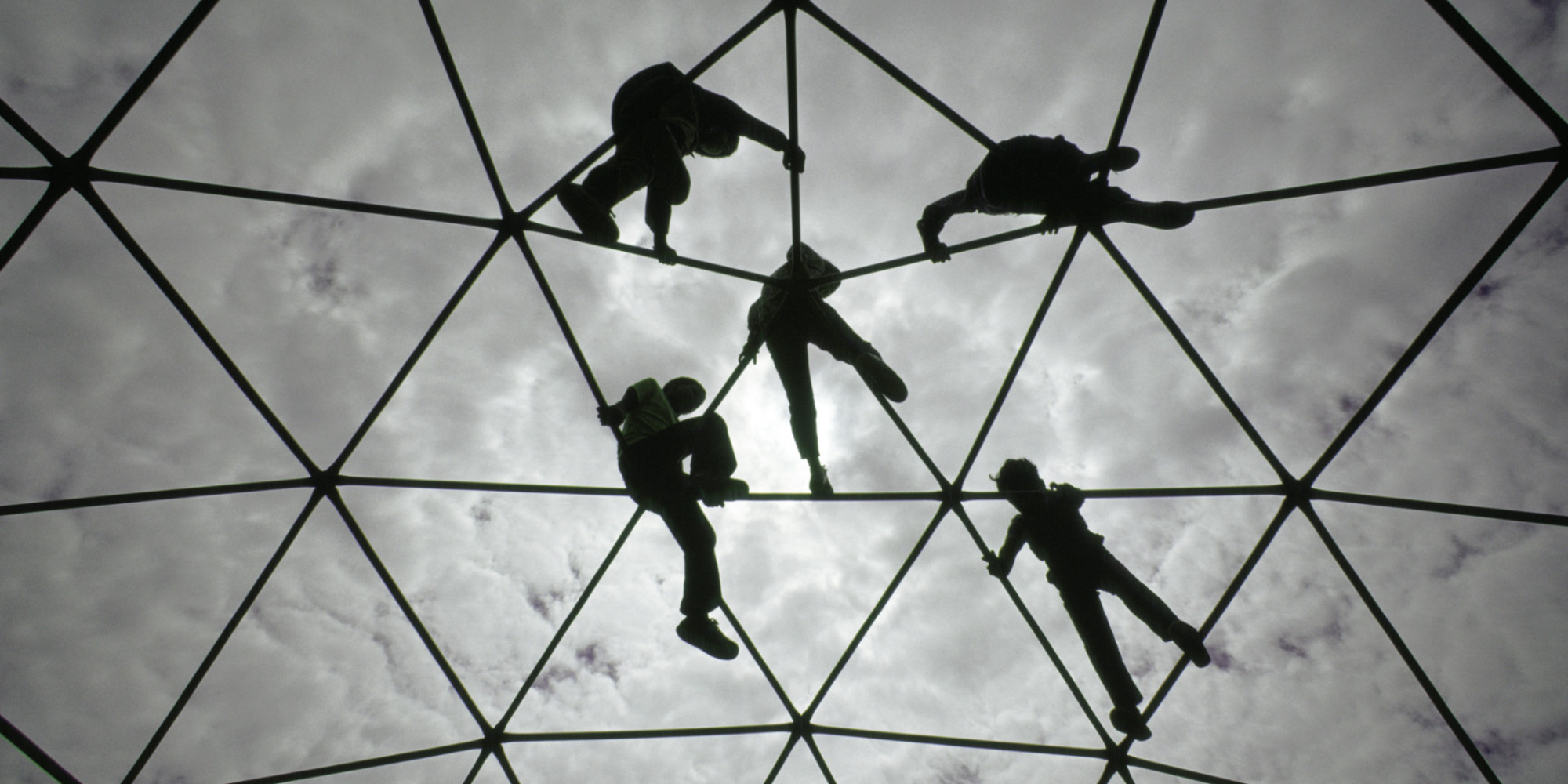
It’s hard to imagine higher dimensions. Even one additional spatial dimension is hard to see with your inner mind’s eye. If you want to imagine six, seven or eight spacial dimensions it isn’t just hard – no one’s even truly conceptualized hyperspace. It’s what makes the subject compelling but also what makes it frustrating to talk about. The examples theorists are able to use to help people “visualize” what can’t be seen must work within human limitations, and are thus second and third dimensional examples of a higher dimensional concept or object.
“Wait a second,” some of you are wondering, “Isn’t TIME the fourth dimension?”
This article is about spacial dimensions only. Personally, I agree with Amrit Sorli and Davide Fiscaletti’s work which I feel adequately proves that time is NOT a spacial dimension. If you want to debate this issue further, you can read my reasoning in my follow up piece, Time: fourth dimension or nah?, also available on Cosmoso.net
One of the most basic exercises in multidimensional theory is to imagine moving in a fourth. The distance between you and everything around you stays the same but in some fourth dimension you are moving. Most people can’t truly do this imagination game because there in nothing in our three spacial dimensions to compare the experience to.
 Flatland
FlatlandIn the famous book about spacial dimensions, Flatland, living, two-dimensional beings existed in a universe that was merely two dimensions. A being with three dimensions, such as a sphere, would appear as a circle able to change circumference as it moved through a third dimension no one in flatland has ever conceptualized.
Humans evolved to notice changes in our three-dimensional environment, inheriting our ancestors ability to conceptualize space in three dimensions as a hardwired trait that actually stops us from conceptualizing other aspects of reality that might nonetheless exist. Other people see hyperspace as a theoretical construct of mathematics that doesn’t describe anything in reality, pointing to the lack of evidence of other dimensions.

A Tesseract. Many people in the advanced math classrooms of my generation of high school students struggled to wrap their heads around tesseracts without moving diagrams. If a picture is worth a thousand words are we talking animated gifs and words used to describe three dimensional space or should we make up a new saying?
We are able to conceptualize three dimensions in the abstract when we watch TV, look at a painting, or play a video-game. Anytime we look at a screen we watch a two dimensional image from a point outside that dimension. Having an outside point of view for a three dimensional space could give us a way to artificially understand a higher spatial dimension. Until that time comes, we are sort of stuck explaining fourth dimensions by demonstrating how it would look on a two dimensional screen which we view from a third dimensional viewpoint.
It’s kind of like imagining “one million”; you can prove it mathematically to yourself, you can count to it and you know how valuable it is but you can’t truly picture one million of anything. Trying to explain this conceptualization problem with words is pretty tough because your brain is not equipped to handle it. Humans try to wrap their minds around it and dream up ways to explain hyperspace to each other anyways.
 A rubix cube is particularly compelling as a multi-dimensional teaching tool, because it puts spacial dimensions in the abstract in the first place, and then gives the cube the ability to change the dimensional orientation of a third of it’s mass. It’s hard to wrap your head around a normal three dimensional rubix puzzle. By adding another dimension and using the same principle, one can ALMOST imagine that fourth spacial dimension. Most people can’t solve a three dimensional Rubix puzzle but if you think you are ready for the fourth dimension, you can download it and play it on your two dimensional screen, here: Magic Cube 4D
A rubix cube is particularly compelling as a multi-dimensional teaching tool, because it puts spacial dimensions in the abstract in the first place, and then gives the cube the ability to change the dimensional orientation of a third of it’s mass. It’s hard to wrap your head around a normal three dimensional rubix puzzle. By adding another dimension and using the same principle, one can ALMOST imagine that fourth spacial dimension. Most people can’t solve a three dimensional Rubix puzzle but if you think you are ready for the fourth dimension, you can download it and play it on your two dimensional screen, here: Magic Cube 4D
If you don’t think you’re ready to try and solve that puzzle but you want to know more you can watch this roughly 1/2 hour video about it:

While Miegakure is still under development, it’s set for release in 2015. Interactive games like this can spur collaborative thinking from a larger pool of collaborators – and make game developers tons of money.
If you want something a little less abstract than Rubix, check out this prototype for Miegakure, the surreal PlayStation 4 game that lets the user explore a four dimensionally capable world through three dimensional spaces that connect to each other through higher dimensions. It’s a great idea that makes everyone have the initial thought of wondering how the heck they coded it. Then the idea sinks in and you realize they wrote the code first and played with the visual manifestation as they went. It’s a great metaphor for the idea in the first place; begins as a concept rather than an observation. The essence of the argument against hyperspace actually existing is the lack of physical evidence. Unlike a ghost story or a spiritual, religious attempt to explain the supernatural, there is actually mathematical evidence that seems to make higher dimensions possible. It has logical evidence as opposed to empirical data. There are ways to observe without using human senses but it’s difficult to prove an observation of something the majority of humans have trouble even seeing with their mind’s eye, so to speak.
One day we might be able to use technology to increase our understanding of this abstract concept, and manipulate an entirely new kind of media. For now we are stuck with two and three dimensional visual aids and an mental block put in place by aeons of evolution.
|
Jonathan Howard
Jonathan is a freelance writer living in Brooklyn, NY |

Turns out Mars has 150 billion cubic-meters worth of ice that’s been frozen for so long it’s covered with Mars’ ubiquitous red soil. NASA knows this because of radar measurements from the Mars Reconnaissance Orbiter. The ice is spread out among a few ginormous belts made of countless glaciers.
There’s been evidence of a once liquid ocean on Mars’ surface. Curiosity rover found riverbeds back in September 2012 with NASA able to estimate two pints of water for every cubic-foot of soil. In early 2014, Spanish researchers were able to prove glaciers dug canyons 3.7 billion years ago. Water leaves chemical byproducts of various reactions and residues.

No one expected such a big find, except maybe anyone who saw the Arnold Schwarzenegger version of Total Recall.
If you are wondering where Total Recall got the idea for underground glaciers, scientists have suspected glacial activity below the Martian surface for decades. The debate centered around formations that would not be abel to hodl their particular shape without glacial activity but was the frozen material water ice, dry ice, or a muddy mix of red dust and water or some other frozen gas or liquid.

Using logic and science, the evidence available can now be interpreted to be enough to cover Mars with a meter of liquid water, if it melted – and if Mars was completely smooth.
Glaciers of Mars Image: Mars Digital Image Model, NASA/Nanna Karlsson
“We have looked at radar measurements spanning ten years back in time to see how thick the ice is and how it behaves. A glacier is after all a big chunk of ice and it flows and gets a form that tells us something about how soft it is. We then compared this with how glaciers on Earth behave and from that we have been able to make models for the ice flow.”
Read Nanna Bjørnholt Karlsson entire press release on the subject.
Water can easily be separated into hydrogen gas and oxygen, making breathable air and a powerful rocket fuel that can be used for other space missions, including a return trip to Earth. Water can also be used to cultivate food and animal crops on Mars, making colonization a hell of a lot more appealing.
Oh, and one more thing:

|
Jonathan Howard
Jonathan is a freelance writer living in Brooklyn, NY |
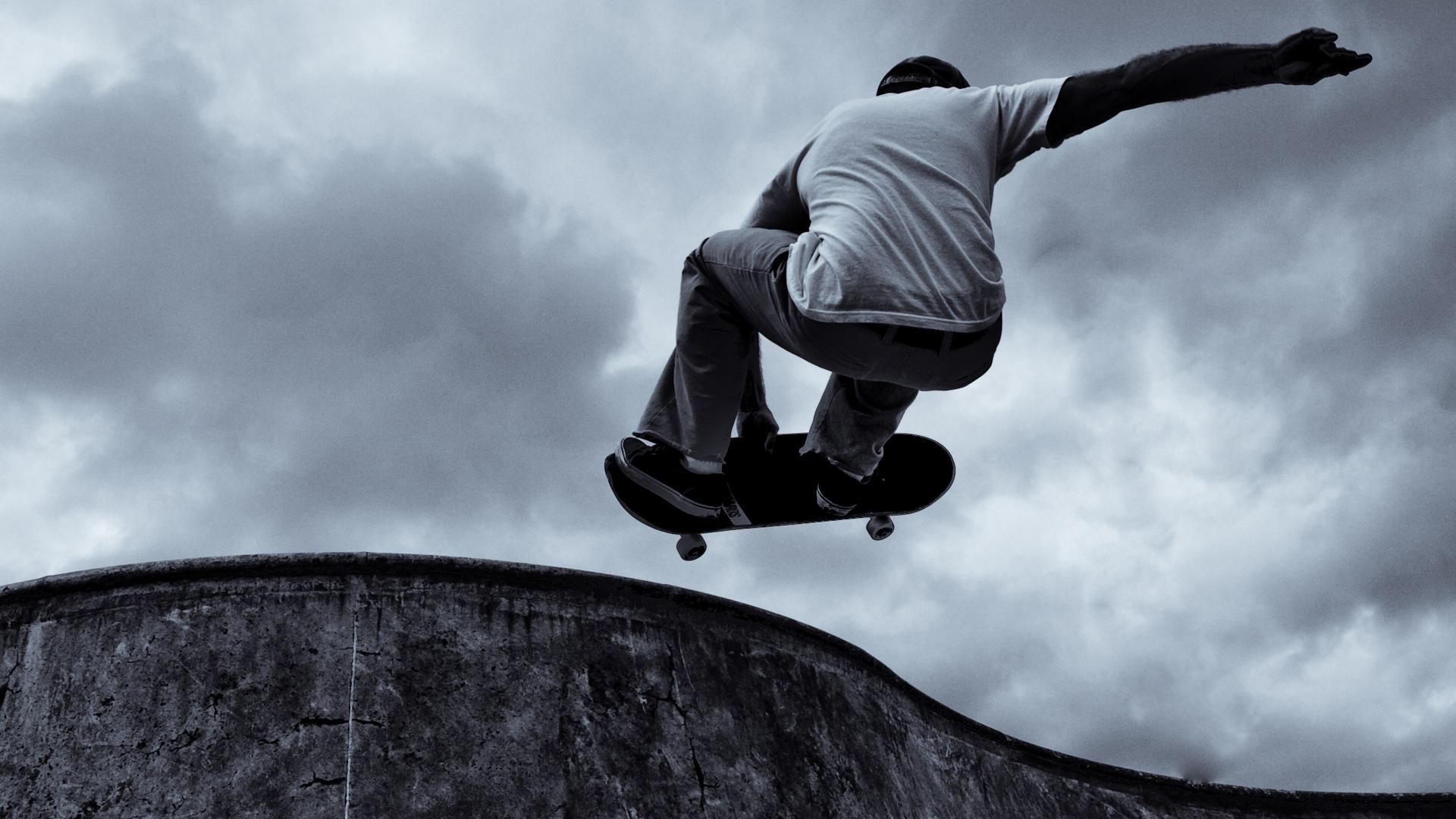
You probably aren’t surprised skateboarders haven’t been using proper physics terms to teach each other sick tricks. Try to wrap your head around Taylor Bray wrapping the board around his front foot while also turning his body around 360 degrees in this short youtube video:
Sometimes it’s almost like only the skater knows what’s going on with the board. As if to prove my point, the title of this video was written by someone who can’t even seem to label the trick. When I was a kid, wrapping the board around your foot like that was called an “impossible”. I originally encountered the clip on facebook with the trick labeled “front foot impossible craze”, making a total of three attempts to describe how Taylor Bray is spinning his body and the skateboard.
Here are some physics concepts Bray obviously understands without having to verbally prove himself:
Leverage. Most flip tricks start with an ollie, leveraging the board up into the air by tapping the end hard against the ground.
Friction. The top of the skateboard has grip tape to increase friction and make it stick to the soft rubber sneakers. The bottom of the skateboard has wheels to make it roll back and forth but not slide as much side to side. This trick doesn’t play to much with sliding friction but tons of tricks play with the various levels of slipperiness and stickiness a skateboard offers.
Potential energy. Bray is popping the board up with an Ollie but there’s also. A newer skateboard deck has “pop” which is basically when the wood is at its most springy. By kicking the board hard against the “ground”(in this case, the ramp), he can make the board bounce up into the air with him when he jumps. The more a skateboard is used it loses its pop.
Gravity. That brief instant where he kicks the end of the board into the ground allows him to jump and escape gravity. An Ollie let’s him bring the board up with him. Gravity always pulls things down at the same rate, making it easy to estimate how much time Bray has to perform the trick. The subsequent slow motion shots of the same trick allow the viewer to analyze the trick but the first version in the clip shows how fast gravity pulls Bray back toward the Earth, giving him about one second to pull off the impossible.
More rolling friction. When he gets the board in the air, he rolls it around his front foot. This trick was called an “impossible” when I was a kid in the 90’s but it’s basically wrapping the board around his front foot using rolling friction.
Inertia. Bray is using inertia in several ways. He is using the speed he has to travel up the ramp against gravity. He’s using the direction the ramp sent him in to help him continue up into the air after the Ollie. Inertia comes into play in a few small ways while he is in the air manipulating the board with his feet. When he finally lands, he continues in the direction he was already going, and it is important that he points the wheels in the approximate direction of that momentum so his inertia doesn’t throw him off balance.
Rotation. Bray is analyzing two different axises in quick succession. First he is rolling the skateboard around that foot in a move where the axis is outside the board itself, then he is catching it with his feet and rotating himself and the board on a vertical axis 360 degrees, landing in the same direction he was facing before the trick began.
In the box above, I stuck to physics concepts. There are additional science concepts at work in this example, such as muscle memory, spatial cognition, coordination, time perception and sense of balance.
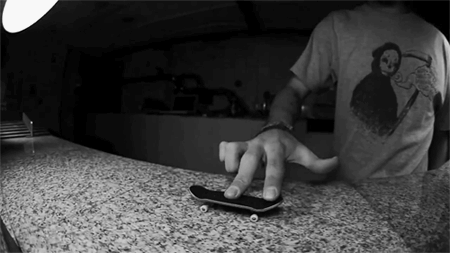
A really common technical flip trick is the 360 flip. A 360 flip spins the board on 2 axises at once. In order to perform the move, a skateboarder has to conceptualize the simultaneous rotations before actually kicking them into place, and the rotations are often too complex for a layman to follow.
Consciousness and the human brain is a relatively young field of study. We are starting to understand what is happening in the brain when we perform complex physical tasks like a frontside 360 front foot impossible. Soon we might be able to identify the intuitive understanding of the related physics concepts and allow someone like Bray to access the verbal explanations of these physical principles as freely as he applies them to reality.
I’ll leave Cosmoso.net readers with this thought about language in skateboarding:
In the 90's, a newer, more symmetrical skateboard design allowed for a new school of technical flip tricks. As designs do when they've reached near perfection, the new school skateboard changes within a very narrow parameter based on current trends in skateboarding - the design has plateaued. Skate tricks are a folk art that are learned from advice from peers and pros. The communication about how to pull off a given trick comes in the form of an esoteric language that changes over time. The names for new and developing styles of tech tricks are different in different social circles, evolve and change over time, and seldom utilize proper physics vocabulary. Skateboarding remains a great way to demonstrate intuitively understood, applied physics.
|
Jonathan Howard
Jonathan is a freelance writer living in Brooklyn, NY |

The technology to understand and manipulate light took centuries to develop, and happened independently across many different cultures. Mirrors have helped to shape the modern human mind while also furthering our understanding of math and science. They are an impressive holdover from the analogue age that doesn’t require electricity yet can produce replicated, moving images at a resolution higher than the human eye can perceive. Cosmoso takes a look at the history of this uniquely high tech piece of our global, human ancestry.
Like a lot of ancient technologies, people were able to develop and perfect image reflection without fully understanding the principles and materials they were manipulating. Creating a mirror in a time before modern science took different paradigms of understanding, such as alchemy, superstition and religious belief.
Human technologies are often inspired by nature. Our ancestors often pondered the meaning of the reflective properties they no doubt noticed in pools of water. When water is flowing, falling or otherwise in turmoil, the light it reflects is scattered but a calm pool of water with a dark surface below it shows a reflection.
Technologies often lead to further inspiration, and the advent of metal smelting and the discovery of glass and crystal lead to a variety of reflective properties humans were able to control. Archeologists have found man made mirrors made of polished obsidian, a natural volcanic glass dated back to 6000 BC in ancient Turkey.
Thousands of years after stone reflective mirrors were created, mirrors made of polished copper were made by ancient Mesopotamians dated to 4000 BC, one thousand years before Egyptians discovered copper smelting and discovered copper reflection on their own, at about 3000 before Christ.
Other types of polished stone mirrors have been found in Central and South America much later around 2000 BC. Ancient Americans developed tech on a later timeline because the land was developed later in the planet’s history by nomadic people who often abandoned technology to live off the land while nomadically exploring previously uninhabited lands.
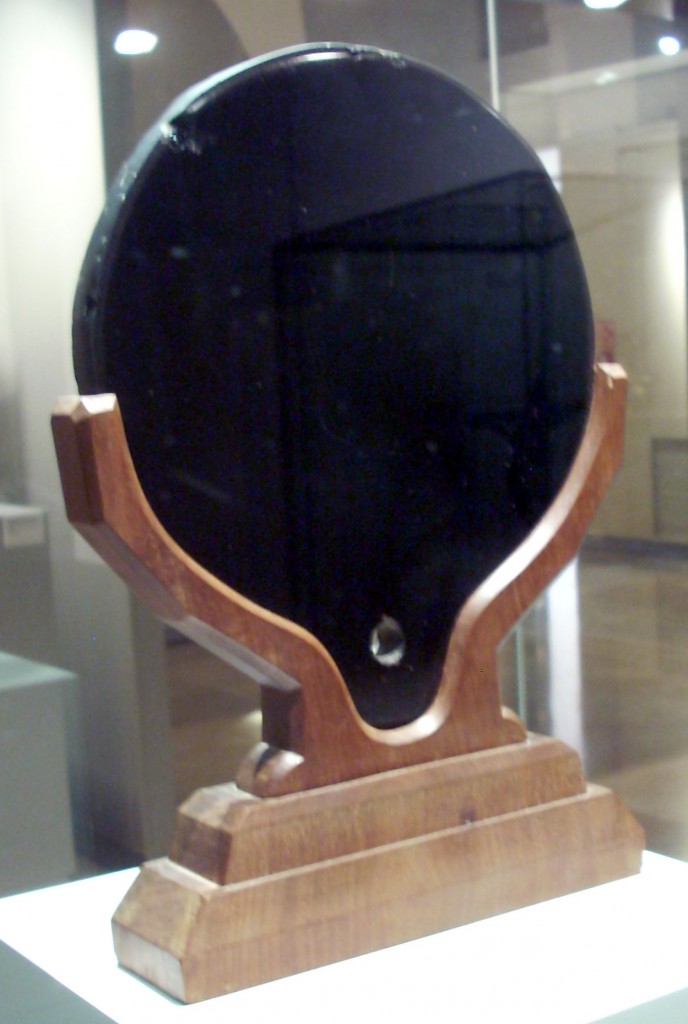
In times when the only access to your own reflection was an enigmatic piece of polished obsidian, the sense of self was a psychological leap away from modern man’s. Obsidian mirrors were used by various cultures to scry or predict the future, and mirrors of stone were thought to possess magic powers.
Around the time when the Americas were still developing stone technologies, bronze mirrors were being manufactured in 2000 BC China. China was very technologically developed at this time, and able to smelt and create a variety of metals, compounds and amalgams, including a bronze. There are many archeological finds attributed by forensics to Chinese “Qijia” culture. Proprietary secrets forced mirror tech to diverge, and it’s possible to find examples of mirrors made from various metal alloys such as copper and tin, at the same time other parts of Asia were still simply polishing copper smelted from the earth. The tin, copper alloy found in China and India is called speculum metal, which would have been very expensive to produce in it’s time.
 Speculum metal coated mirrors brought such a high analogue resolution that people could understand what they looked like, which affected fashion and hairstyles but also began to affect other artforms like dancing and martial arts. Philosophical concepts such as duality, other worlds and multiplicity were suddenly easy to explain via analogy with the help of a mirror.
Speculum metal coated mirrors brought such a high analogue resolution that people could understand what they looked like, which affected fashion and hairstyles but also began to affect other artforms like dancing and martial arts. Philosophical concepts such as duality, other worlds and multiplicity were suddenly easy to explain via analogy with the help of a mirror.
Manipulation of one’s own facial expression, slight of hand and other practiced mannerisms were now able to be studied and documented, creating new layers to the fabric of civilization.
For all of this cultural development, there was no scientific analyzation of why a mirror worked or the light it was reflecting. Before mirror technology could be advanced, there needed to be written, thoughtful investigation of why the tech worked in the first place. This was a slow process in any ancient tech but in a time before light waves and chemistry was understood, it was extremely slow. The earliest written work studying the way light reflects came from Diocles, a Greek mathematician and author of On Burning Mirrors who lived 240 BC – c. 180 BC. Illiteracy and language barriers slowed the technological development of concave and convex curved mirrors another few hundred years.
Mathematics and mirrors will always have a reciprocal relationship, with math and science allowing humanity to dream up new ways of manipulating light and mirrors allowing that manipulation to inspire new questions and explanations. What was once considered magic became the study of the world we inhabit as technology took root in the physical and psychological world humans are trapped in.
Another technological breakthrough happened in ancient Lebanon when metal-backed glass mirrors were finally invented, first century AD. Roman author Pliny wrote his famous work, “Natural History” in 77 AD, where he mentions gold-leafed glass mirrors, though none from that time have survived. Most Roman mirrors were glass coated with lead which might have used the same technological process and just been much cheaper than gold.

Discovering the text On Burning Mirrors, Greco-Egyptian writer, Ptolemy, began to experiment with curved polished iron mirrors. He was able to peak the interest of wealthy benefactors and study with impunity. His writings discuss plane, convex spherical, and concave spherical mirrors. This was circa 90 AD. The image above describes light passing through a cylindrical glass of water.
Silver-mercury amalgams were found in archeological digs and antique collections dating back to 500 AD China. Renaissance Europeans traded with the known world, perfecting a tin-mercury amalgam and developing the most reflective surfaces known until the 1835 invention of silvered-glass mirrors. Historical records seem to credit German chemist Justus von Liebig with silvered glass but glassworkers guild records obscure the story behind it. Silvered glass coats metallic silver on the back of the reflective glass by utilizing silver nitrate in the dawning of applied chemistry. Silver is expensive but the layer is so thin, and the process so reliable that affordable mirrors began to show up in working class households across the planet ever since.
|
Jonathan Howard
Jonathan is a freelance writer living in Brooklyn, NY |